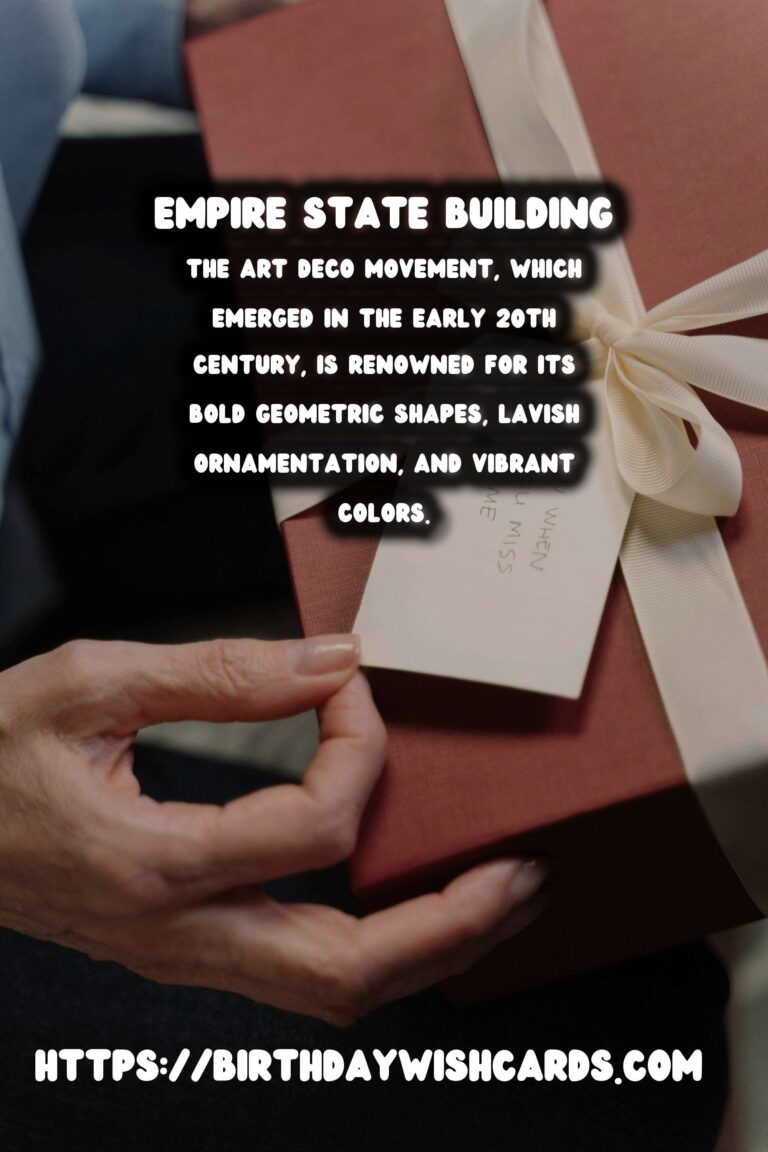
The Art Deco movement, which emerged in the early 20th century, is renowned for its bold geometric shapes, lavish ornamentation, and vibrant colors. This architectural style, which manifests an era of wealth, excitement, and innovation, can be witnessed across various global cities that proudly showcase these design marvels. Embark on a historical tour of Art Deco cities, where architecture meets artistry in breathtaking harmony.
New York City, USA
New York City stands as one of the most iconic representations of Art Deco architecture, with skyscrapers that defined an era. The Empire State Building, Chrysler Building, and Rockefeller Center are paragons of this style characterized by their sleek, symmetrical lines and opulent detailing. Walking through the streets of Manhattan, one can experience the grandeur and optimism of the 1930s.
Miami, USA
Miami’s South Beach is synonymous with Art Deco, featuring pastel-colored buildings with nautical motifs and streamlined designs. The Miami Art Deco District offers myriad examples of this style, bringing a sense of playfulness and tropical flair that is unique to this coastal paradise.
Paris, France
Paris, the heart of the Art Deco movement’s origins, hosts several masterpieces that highlight the sophistication and elegance of the style. The Théâtre des Champs-Élysées, completed in 1913, showcases clean lines and minimal ornamentation, while landmarks like the Palais de la Porte Dorée integrate exotic influences, reflecting France’s colonial past.
Napier, New Zealand
Napier transformed into an Art Deco wonder following the devastating earthquake of 1931. The city’s reconstruction led to a plethora of Art Deco buildings, each uniquely contributing to what has become a globally recognized architectural destination. The streets of Napier are a testament to resilience and architectural beauty.
Mumbai, India
Mumbai houses some of the world’s most extraordinary examples of Art Deco architecture outside Europe and North America. The city’s Marine Drive, comprising a long curved waterfront boulevard, is flanked by Art Deco buildings boasting curved corners, elegant balconies, and a distinctive visual identity that blends Indian motifs with Western influences.
Shanghai, China
Shanghai’s Bund is an architectural showcase of early 20th-century styles, where Art Deco competes for attention with neoclassical and Beaux-Arts designs. The Peace Hotel, with its iconic green pyramidal roof, stands as a symbol of Shanghai’s cosmopolitan past and its embrace of modernity.
Conclusion
The Art Deco movement was more than just an architectural style; it was a reflection of societal change, innovation, and the interwar period’s optimism. Discovering these Art Deco cities allows for an appreciation of how architecture can influence cultural identities and stand as a testament to human creativity.
The Art Deco movement, which emerged in the early 20th century, is renowned for its bold geometric shapes, lavish ornamentation, and vibrant colors. Discovering these Art Deco cities allows for an appreciation of how architecture can influence cultural identities and stand as a testament to human creativity.
#ArtDeco #Architecture

